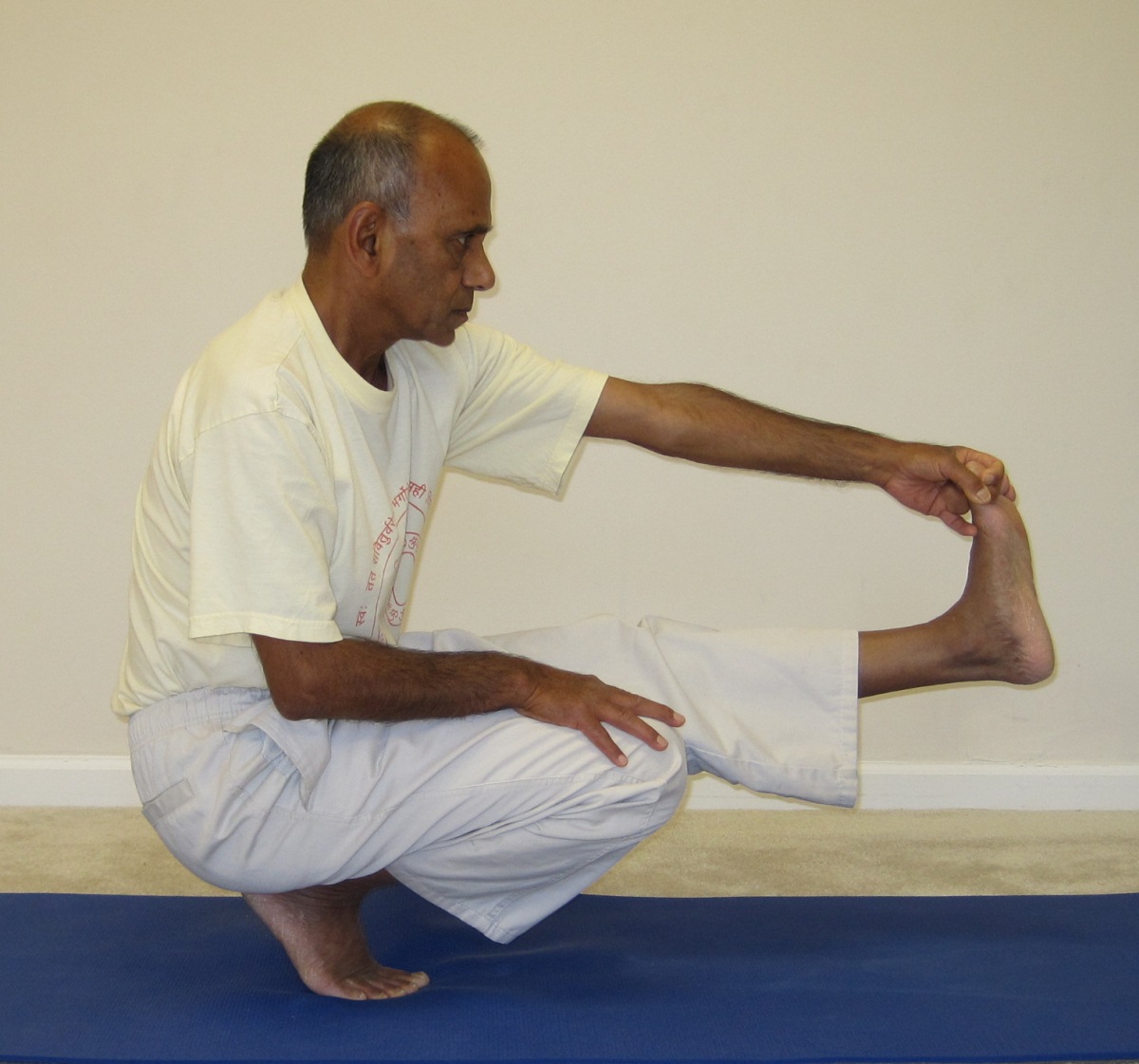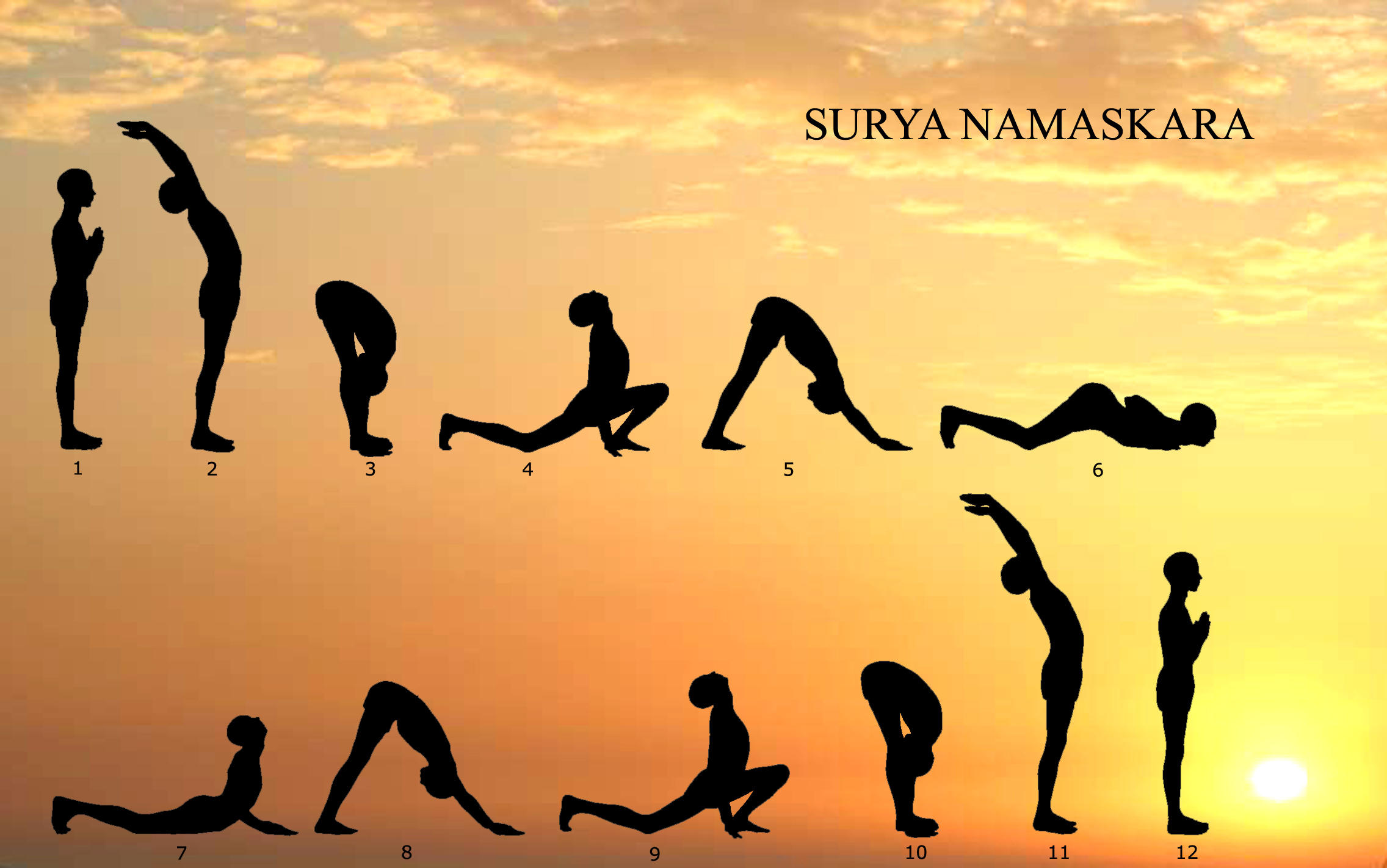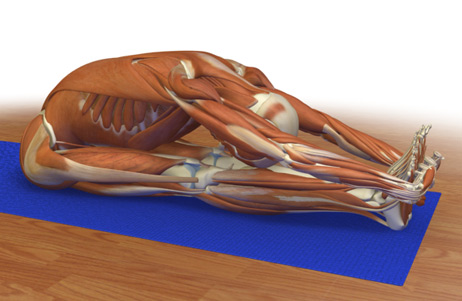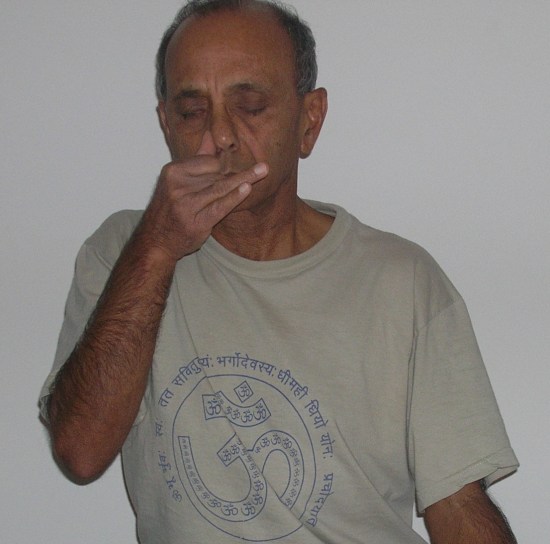|
|

I am pleased to announce the next 21-day Yoga Challenge program. The past programs have been very well received by all the participants. For most of them, it has been truly a life-transforming experience. I invite you to join me on this exciting and deeply rewarding 21-day yoga journey. Here are the particulars:
- When: Monday, March 24 – Sunday, April 13, 2014
- Time: 6:00 AM – 7:30 AM
- Where: 4000 Bear Cat Way, Suite 102, Morrisville, NC 27560
- Cost: $125
Continue reading »
Imagine a large group of people moving in a beautifully flowing sequence – the twelve positions of Surya Namaskar, orchestrated by this lovely rendition of the mantras associated with Surya Namaskar [audio:http://www.integralyogastudio.com/sounds/SuryaNamaskarMantra.mp3]. The atmosphere was serene and peaceful. Everyone got into a deeply meditative mood, moving the bodies in tune with the chants and following the natural rhythms of breathing. Yes, we are talking about the Surya Namaskar Yogathon event at the Hindu Temple in Morrisville where we practiced 108 rounds of Surya Namaskar (Sun Salutation).
The event was held on Saturday, March 1, 7:00-11:30 AM and was attended by about 65 people. A large percentage of the participants completed the full set of 108 rounds. The event was followed by a vegetarian, freshly cooked meal which everyone enjoyed.
Please visit my blog post that I wrote after the same event last year wherein I have provided many more details about the program.
We plan to make it an annual event and are hoping to hold the event on the first Saturday in March each year.
If you were a participant, I would love to hear from you with your feedback and comments (in the comment box below). I look forward to your enthusiastic participation in future events.
In previous posts, I have talked about the five yamas and the five niyamas, two of the eight limbs in Patanjali’s Yoga Sutras. According to Patanjali, these yamas and niyamas have to be understood thoroughly and practiced diligently in order to bring about peace and stability of the mind.
Starting with today’s post, I will try to address the question, "How can we integrate these values into our daily yoga practice"?
You may recall, the yamas and niyamas are the ethical and moral guidelines presented by Patanjali and form the foundation for a fully integrated yoga practice. Yamas guide us regarding interpersonal relationships and niyamas about how to inculcate self-discipline of various types. The yamas and niyamas are listed below:
Continue reading »
I invite you to join me for a discussion on the Yoga Sutras of Patanjali wherein I will introduce some of the key concepts of the sutras. We will also discuss how an understanding of the sutras can profoundly impact our day-to-day life in a positive way.
- EVENT: Intro to Yoga Sutras of Patanjali
- WHEN: Sunday, March 2, 2014
- TIME: 4:00 – 6:00 PM
- LOCATION: 4000 Bearcat Way, Suite 104, Morrisville, NC 27560
- FEE: by voluntary donation
Plenty of parking is available.
No previous exposure to yoga or Yoga Sutras is required.
Why study the Yoga Sutras of Patanjali (YSP)?
Because, YSP is not just a manual on yoga philosophy, it is a manual on "life". A study of this manual will help us understand:
- How to live a life full of peace, harmony and fulfillment
- What is stress, what causes stress and how to manage stress
- How to achieve your maximum potential in life
- What is mind and how to understand its functioning
- What causes suffering and how can we prevent suffering
- How to keep the mind calm and peaceful in the face of adversity
- What is the goal of life and how to achieve that goal
- Does the practice of yoga only involves the practice of asana (physical postures) or is there more to this practice?
- What is self-realization
- … and much more …
Come join me for this introductory talk on the Yoga Sutras and see how its study can help us in all aspects of life listed above.

I invite you to join us for this memorable yoga event where we will practice 108 rounds of Surya Namaskar (Sun Salutations). Surya Namaskar, practiced to the accompaniment of beautifully chanted mantras, will not only invigorate and energize you but also lead you into a state of deep meditation.
- Event: Surya Namaskar Yogathon (108 rounds of Sun Salutations)
- Location: Hindu Temple (HSNC) 309 Aviation Parkway, Morrisville, NC 27560; temple phone: (919) 481-2574
- When: Saturday, March 1, 2014
- Time: 7:00 AM to 11:30 AM (doors will open at 6:30 AM)
- Program: Om chanting, invocation prayer, a brief discussion of the mantras associated with SN (a chart of SN is available on my website here), practice 108 rounds of Surya Namaskar accompanied by the chanting of beautifully rendered Surya Namaskar mantras, yoga nidra (deep relaxation), brief session of pranayama to balance out the flow of prana, closing chants.
- Program Fee (including veggie lunch): $15 with pre-registration or $20 on the day of the event; In addition, please try to find sponsors who might be willing to pledge money per round that you complete.
- Lunch: Vegetarian lunch will follow the event
Please fill out the registration form here. On the same page, you will find a link, labeled "donate", for making payment via paypal.
We will take short breaks after every 12 rounds. Everyone is strongly advised to practice only as many rounds as they are comfortable with. Feel free to take breaks on your own even during each round and rejoin the session at any time.
The practice of 108 SNs is an ancient Hindu tradition and is traditionally done to honor the change in seasons. Typically, it is done during the summer and winter solstice time (longest and shortest days of the year). In addition to its spiritual and cultural value, the practice is highly beneficial from a health and well-being point of view as it makes the body highly flexible, supple, strong and also helps remove toxins from the system.
I look forward to your enthusiastic participation. Please share this information with your own distribution lists.

In the Indian culture, six negative tendencies are listed as the biggest enemies of the human mind. These are
- kama (lust/cravings)
- krodha (anger)
- lobha (greed)
- moha (delusion/a disconnect from reality)
- mada (pride/arrogance)
- matsarya (jealousy)
Continue reading »

Whether you are new to yoga or a seasoned yoga practitioner, chances are that you have experienced tightness in your hamstrings in some of the yoga poses at one time or another. In the classes that I teach, I have noticed that most new students, especially men, even more so if they are over the age of 45, have tight hamstrings. Tightness of the hamstrings limits their ability to practice many of the poses with ease. Some of the common problems associated with tight hamstrings are:
Continue reading »

I am pleased to announce the next 12-day pranayama/meditation intensive.
Come and join me for this life-transforming experience where you will learn two of the most important aspects of a complete, integrated yoga practice – pranayama (breathing techniques) and meditation. In this program I will introduce you to many of the breathing techniques that are mentioned in our ancient yogic texts. I will also introduce the concepts and techniques of meditation. No prior pranayama or meditation experience is required.
- When: Wednesday, January 29- Sunday, February 9, 2014
- Time: 6:00 – 7:30 AM
- Location: 4000 Bearcat Way, Suite 102, Morrisville, NC 27560
- Daily Routine: Light stretching (10-15 minutes), Pranayama (30 min), Relaxation (10 min), Yoga philosophy (15 min), Meditation (20 min).
- Commitment: A firm commitment to follow this schedule and attend every day
- Fee: $75
Continue reading »
Patanjali, in the Yoga Sutras, has given us this definition of Yoga:
Yogash-chitta-vritti-nirodhah (sutra 1.2)
"Yoga is defined as the cessation of the fluctuations of the mind-complex"
In practical terms, this sutra can be translated as "yoga is the ability to stay calm in all situations in life". When we say "all situations in life", it implies that no matter how dire or desperate the situation may seem, we need to learn how to stay totally calm and peaceful. Only with a calm mind can we handle even the most difficult situation in life effectively and efficiently. The reverse is also true – if we allow the mind to get disturbed, then any decision or action that we take with a disturbed mind cannot be the most effective and, in fact, can bring about negative results.
In subsequent sutras, Patanjali talks about the two pillars of yoga practice that will help us achieve that calmness of mind that we are seeking – abhyasa (practice) and vairagya (non-attachment).
abhyaasavairaagyaabhyaaM tannirodhaH (sutra 1.12)
Continue reading »
In an earlier article, I introduced the concepts and benefits of Yoga Nidra. In today’s post, I would like to present the Yoga Nidra practice.
As mentioned in my earlier post, practice of yoga nidra is an integral part of every yoga class that I teach. It is usually practiced after the asana (physical postures) part of the session has been completed.
Yoga nidra is best practiced under the guidance of a teacher. The teacher usually goes through a fixed routine that the student gets used to over a period of time. When the student hears the same voice and the same routine for each yoga nidra session, the body and mind learn to get into natural states of deep relaxation.
If you do not have access to a yoga teacher, or would like to practice it at home as a part of your home routine, you may like to use a recorded version of your teacher’s instructions. Please contact me if you would like to use the recorded version of the yoga nidra sequence that I follow. I’d be happy to share the audio file with you.
The routine consists of first tightening and tensing up different parts of the body, one at a time. Then follows a sequence wherein we progressively relax every part of the body while scanning the body from toes to head in a sequential manner. The practice concludes by gradually bringing the body back to breath awareness, then body awareness and finally gently stretching to wake up the body into full awareness.
Continue reading »
|
Video DVD
Yoga with Subhash (asana and pranayama)
- Basic asana sequence (~50 min) ($18)
- Pranayama/Meditation (~35 min) ($12)
- Set of above two ($25)
Video recording of special programs offered in the past
(Links to YouTube videos will be provided)
- 21-day yoga immersion - $40
- 7-day hip opening intensive - $20
- 14-day meditation intensive - $30
- 14-day pranayama intensive - $30
- 7-day hamstring/quad intensive - $20
- 14-day Level 2 yoga intensive - $35
Payment options:
- cash, check, Zelle (use subhashmittal@gmail.com) or Venmo (use 9199269717)
- PayPal (go to bottom of page) (add $5 to the fee listed above)
Please contact me if you would like to buy.
|





Recent Comments